- DESCRIPTION
- UTOPIAN INFRASTRUCTURE: THE CAMPESINO BASKETBALL COURT
- ELEMENTS OF THE PROJECT
- TEXTS
- PHOTOGRAPHS

MEXICO PAVILION 18TH INTERNATIONAL ARCHITECTURE
EXHIBITION LA BIENNALE DI VENEZIA
↔
26.[NOV].2023
The Mexican Pavilion for the 18th International Architecture Exhibition La Biennale di Venezia 2023, in addition to serving as a platform for research on the rural basketball court as a typology, is an active laboratory during the Biennale: a temporary social space that will function across various dimensions. It is composed of a fragment of a basketball court, a drop ceiling of perforated paper, a propaganda kiosk, an audiovisual installation, a decolonial jukebox, and an opening activation. Parallel to the Carnival program from La Biennale di Venezia 2023, the Mexico Pavilion has the following platforms for critical exchange between June and November, 2023: a webpage (infraestructurautopica.com), a radio station (Radio el Colibrí del Lado Izquierdo), and a film club (Cineclub Bizalú).
The Fragment of the Basketball Court
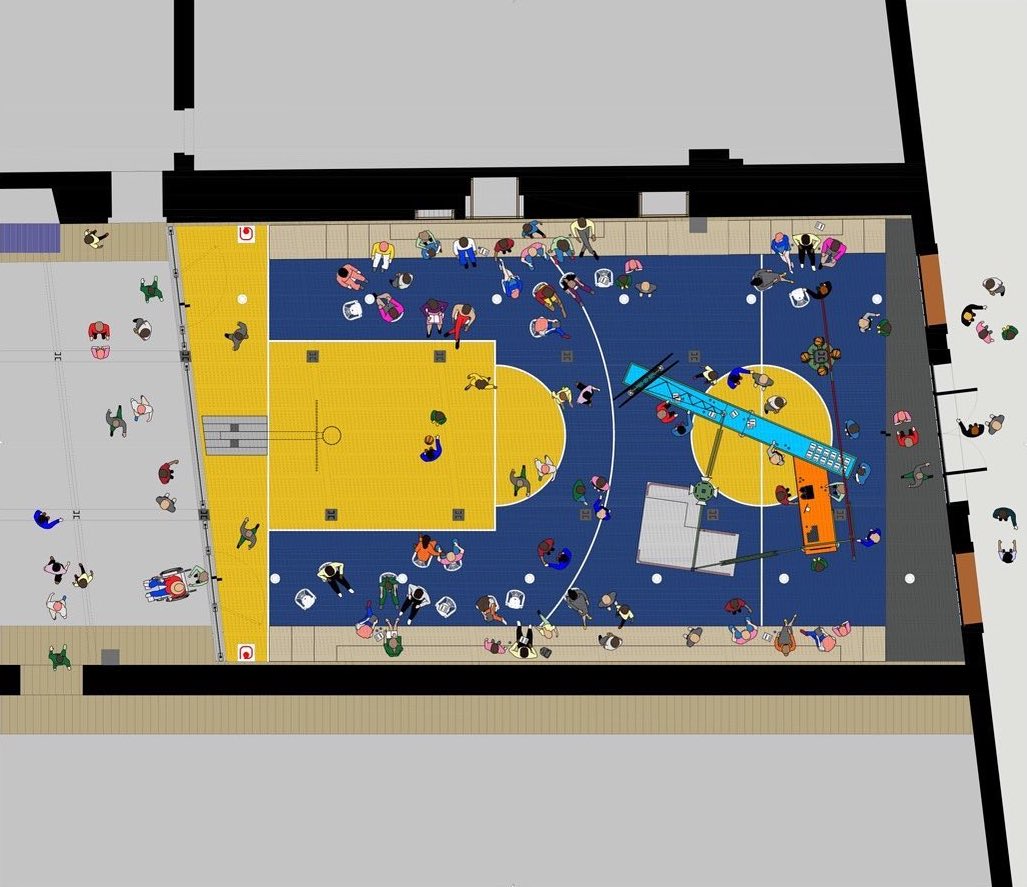
The fragment of basketball court, designed by APRDELESP, is based on the smallest unit of campesino infrastructure—the basketball court—that acts as a communalist laboratory for the future. It includes a floor drawing, a basket with its backboard painted by the artists Dr. Lakra, Karla Kaplun and Francisco “Taka” Fernández, two sets of lateral bleachers, lighting, and a net that works as a containment element with two access points, the exhibition text, two signs made by collectives of Oaxacan women weavers, including Patchwork Healing Blanket / La manta de curación, Centro Ecológico Milpa Urbana (Urban Milpa Ecological Center), and Hormigas Bordadoras de Tanivet (Embroidering Ants of Tanivet), and a poem by Delmar Penka.
Papel Picado (Cut Paper) Drop Ceiling
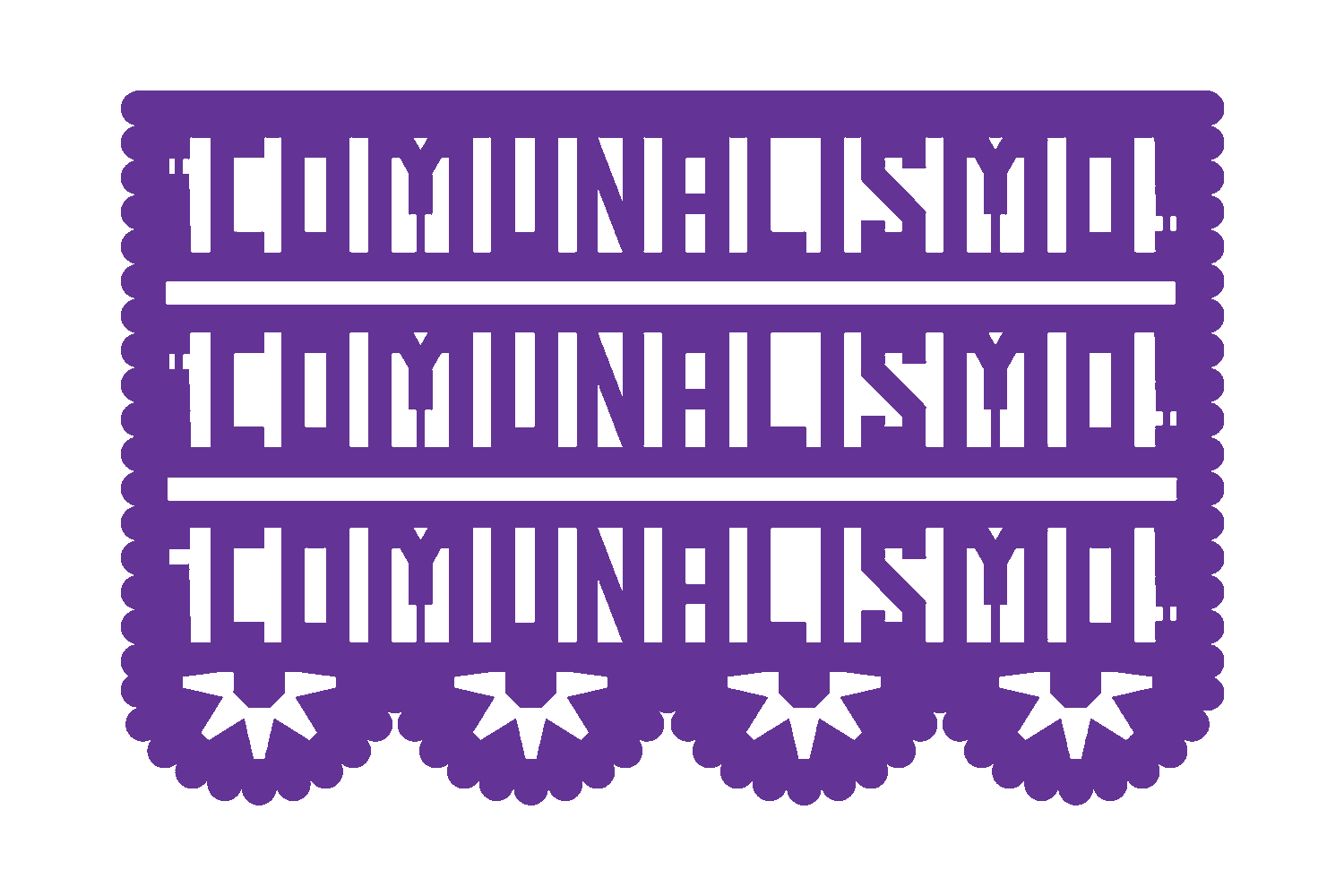
The cut-paper drop ceiling, designed by e+e serves as an auxiliary mechanism for communicating the principles around which utopian infrastructure is organized: COMMUNALISM! AGRARIANISM! SELF-GOVERNANCE! REBELLION! LAND! LIBERTY!
The Propaganda Kiosk
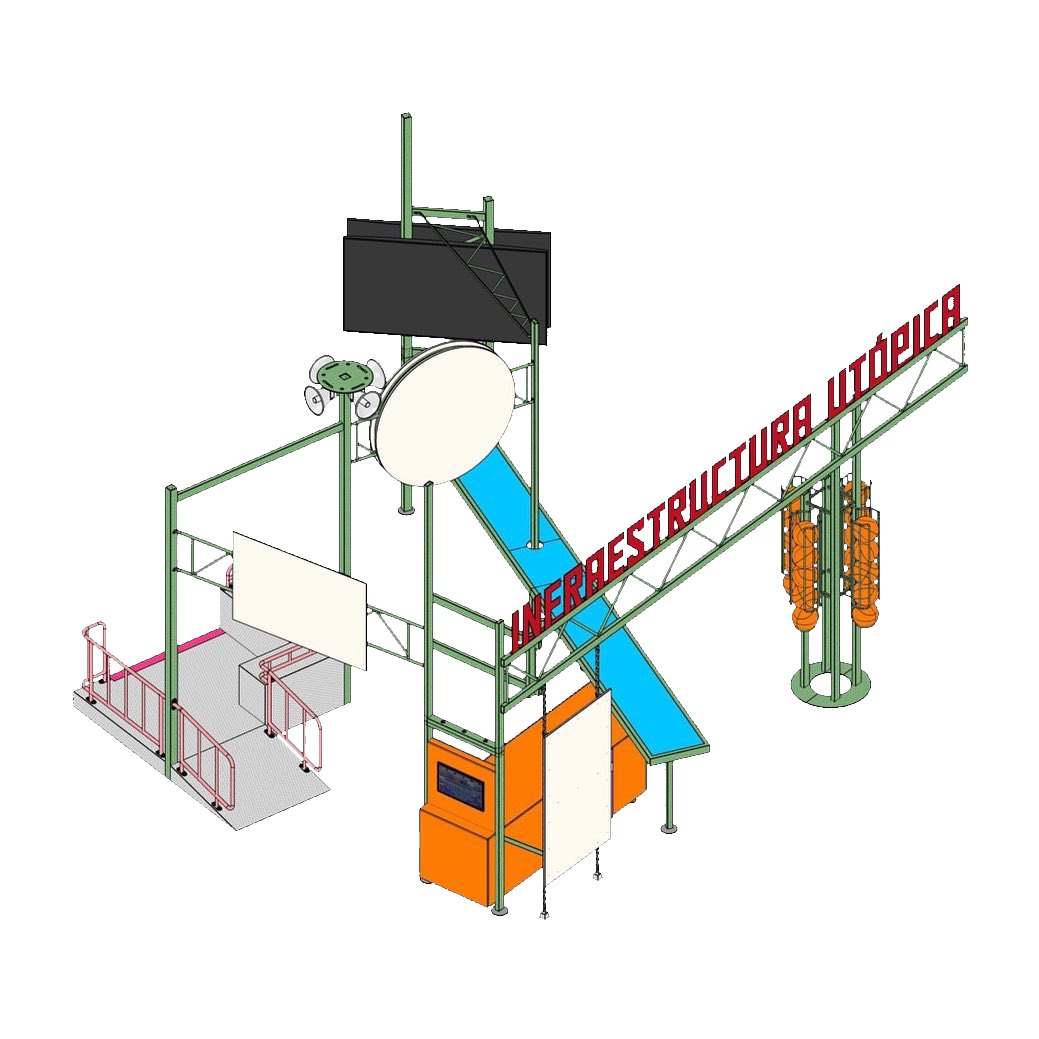
The Propaganda Kiosk, designed by Studio Fabien Cappello, is inspired by indigenous constructivist architecture and will function as a transmission device. It contains a stage, two bars, a storage area, a balloon dispenser, a decolonial jukebox, two screens, four loudspeakers, a coffee station, the exhibition text, and a logo and two signs painted by Dr. Lakra, Francisco “Taka” Fernández, and Karla Kaplun.
The audiovisual installation
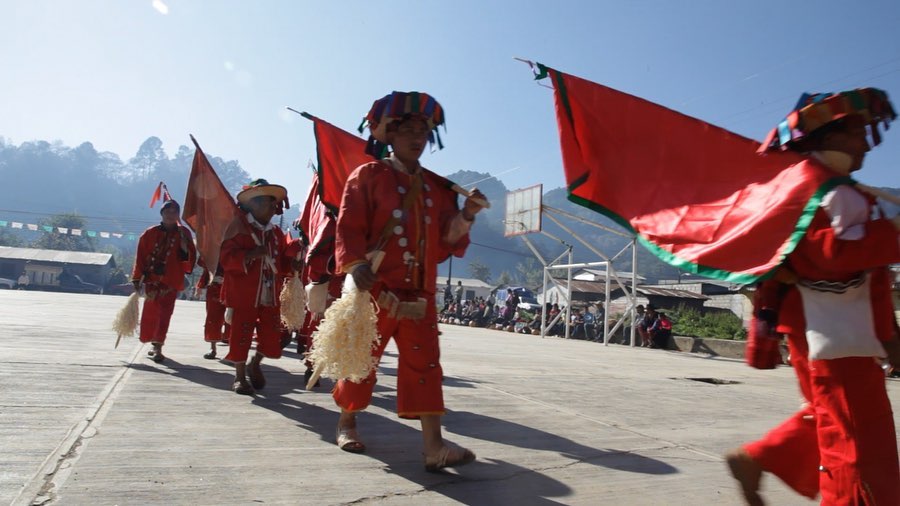
The audiovisual installation is projected onto two screens situated in the Propaganda Kiosk and consists of two videos: an experimental short by Antonio Turok based on his documentary research in the Tzeltal community in Tenejapa, Chiapas, where the cycle of corn, a ritual universe unto itself, is regenerated through mythologies and their staging on the basketball court; and a compilation made across the length and breadth of Mexico by Brian Cross, Eunice Adorno and Jorge Santiago that depicts the campesino basketball court, in its many forms and functions, as a sustaining space for communities.
The decolonial jukebox
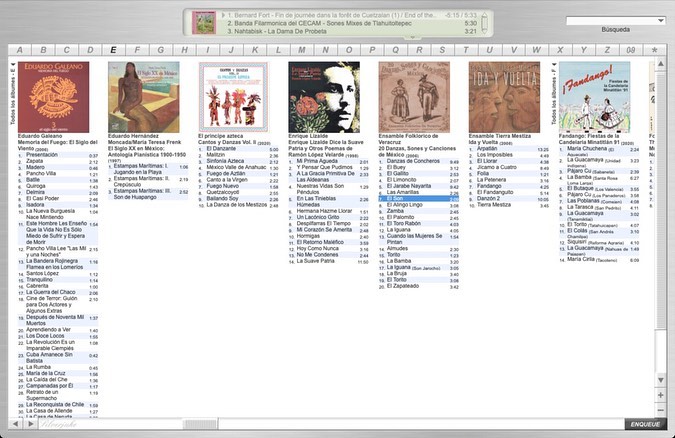
The decolonial jukebox is located in the propaganda kiosk and allows users to choose recordings that play on the four loudspeakers. The selection, coordinated by Radio Nopal (with contributions by Jorge Bobadilla Vargas, Rolando Hernández, and Juan Pablo Villegas), contains archival material, music from different communities, and popular songs.
The opening activation
During the opening of the 18th International Architecture Exhibition La Biennale di Venezia, on May 18, 19 and 20, the Mexico Pavilion was activated with the dance of the catrines from Tlaxcala.
infraestructurautopica.com
infraestructurautopica.com, designed by e+e, is the webpage for the Mexican Pavilion of the 18th International Exhibition of Architecture La Biennale di Venezia 2023, functioning as an outlet for communication, and as a platform for documentation. It compiles the following research content: original essays written by Adrián Román, APRDELESP, Delmar Penka, Gimena Bustamante, Mariana Botey, Sergio Galaz, and Salvador Amores, as well as a compendium of visual research and field documentation with work by Brian Cross, Eunice Adorno, Jorge Santiago, and Kasser Sánchez.
Radio El colibrí del lado izquierdo can be streamed from this website.
Radio El colibrí del lado izquierdo
Radio El colibrí del lado izquierdo—or The Hummingbird from the Left Side1—developed by Radio Nopal, is a radio station for the Mexican Pavilion of the 18th International Exhibition of Architecture La Biennale di Venezia 2023. The station is broadcasting live from Radio Nopal in Mexico City from June to November. It showcases voices and stories that revolve around rural basketball courts through active and constant programming: live transmissions, archival materials, interviews, concerts, mixtapes, sonic collages, and a series of podcasts.
The content will be the product of a six-month studio workshop and will deal with the following lines of inquiry: decolonization, decarbonization, national indigenisms, transnational indigenisms, agrarian revolution, utopian infrastructure, rural construction and The Laboratory of the Future.
- Translation from the Spanish of the name Huitzilopochtli, the principal deity of the Mexicas. ↩
Cineclub Bizalú: Imaginarios insurgentes
The Cineclub Bizalú:2 Insurgent Imaginaries, managed by Mariana Botey, Salvador Amores, and Pablo Escoto Luna, is the film cycle of the Mexican Pavilion of the 18th International Exhibition of Architecture La Biennale di Venezia 2023. It is held weekly, from June to November, and is projected on Radio Nopal, the alternate venue of the pavilion in Mexico City. The selection covers nearly a century of Mexican cinema dealing, from distinct historical, ethical and political standpoints, with the conceptual power of insurgency.
The 25 films selected for the this cycle deploy a multiplicity of registers, ideologies and formal tactics, beginning with the Cardenista rhetoric of the foundational classics, passing through the forgotten documentaries made with various indigenous communities by the National Indigenous Institute—the production of which concluded with the first Indigenous Cinema Workshop—and ending up, finally, in the present wave of experimental cinema that seeks to reconfigure the idea of the nation and with cinema produced by filmmakers from indigenous communities that reformulates how the nationality is represented. The selection traces out a transhistorical itinerary through distinct iterations of insurgency in Mexico and draws an audiovisual atlas of revolutionary sentiment and its many mutations. Insurgency presents itself, in the end, as one of the principal motors for rewriting the history of Mexican cinema and as a potential propellant for imagining the future.
For more information, see Cinematic Insurgencies: Notes on the Cycle Insurgent Imaginaries for the Cineclub Bizalú by Salvador Amores.
- ‘Bean Eye’ in the Zapoteco language ↩


